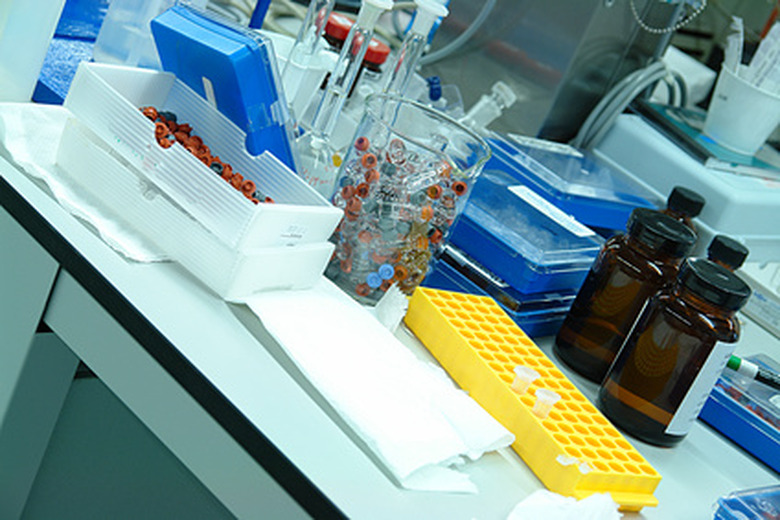Reduction Of Benzophenone By Sodium Borohydride
Benzophenone reacts with sodium borohydride in a methanol solution. The result is diphenylmethanol and a secondary reactant. The reduction starts with breaking the benzophenone carbon-oxygen double bond. The carbon attracts a hydrogen atom from borohydride, and the oxygen attracts a hydrogen atom from methanol.
Hydrogen to Central Carbon
Hydrogen to Central Carbon
Central carbon of benzophenone bonds with one hydrogen from borohydride (BH4), while the benzophenone oxygen briefly exists as an anion, which is a negatively charged atom.
Benzophenone Oxygen to "OH"
Benzophenone Oxygen to "OH"
The anionic oxygen (O-) attracts a second hydrogen atom from the carbon end of CH3OH. The main product, diphenylmethanol, differs from the original by the presence of an "OH" functional group.
Other Reaction Products
Other Reaction Products
When benzophenone reduces to diphenylmethanol, leftover products include the CH2OH and NaBH3 species. The energetic CH2OH and NaBH3 quickly bond to give (CH2OH)H3B-Na+. This complex is the main second product of benzophenone reduction.
Reactant Ratios
Reactant Ratios
In life, four benzophenone molecules react with each BH4 complex. Since four benzophenone molecules each attract a hydrogen atom from the "BH4" hydrogen donor, four "CH2OH"s bond with each boron (B) atom. Realistically, the secondary product is (CH2OH)4B-Na+ and four diphenylmethanol molecules. Focusing on one benzophenone molecule at a time is helpful for explaining and understanding reaction steps.
Cite This Article
MLA
Aberdeen, Stan. "Reduction Of Benzophenone By Sodium Borohydride" sciencing.com, https://www.sciencing.com/reduction-benzophenone-sodium-borohydride-6950951/. 24 April 2017.
APA
Aberdeen, Stan. (2017, April 24). Reduction Of Benzophenone By Sodium Borohydride. sciencing.com. Retrieved from https://www.sciencing.com/reduction-benzophenone-sodium-borohydride-6950951/
Chicago
Aberdeen, Stan. Reduction Of Benzophenone By Sodium Borohydride last modified August 30, 2022. https://www.sciencing.com/reduction-benzophenone-sodium-borohydride-6950951/
